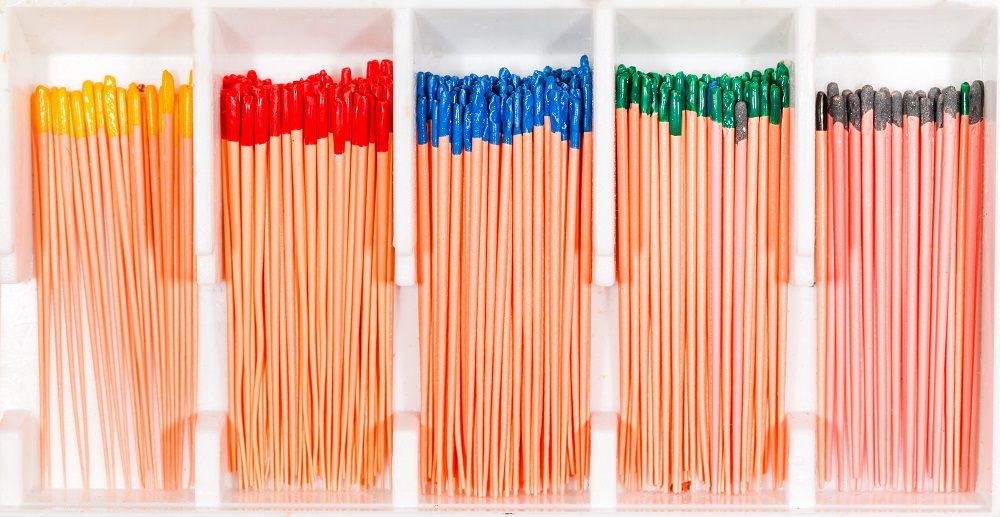Gutta-percha is the purified coagulated exudate from the Palaquium gutta tree, commonly called the “mazer wood” tree, of the Burma and Malay archipelago.
Brief History of Gutta-Percha in US Dentistry
Gutta-percha has been used since the late 1950s in traditional US dentistry practice for gutta-percha points, otherwise known as GP points. It has since been produced in the US as a material compounded from balata, a nearly identical latex to gutta-percha. Balata is derived from the Mimusops Globsa tree of South America.

Gutta-percha points
Gutta-Percha’s Chemical Composition
The AAE Glossary of Endodontic Terms says, “Both gutta-percha and natural rubber are high molecular weight stereo-isomers of polyisoprene. Natural rubber, cis-polyisoprene, exists with its —CH2 groups (the chain-forming links between the individual isoprene units) on the same side of the double bond; while gutta-percha, trans-polyisoprene, exists with its —CH2 groups on opposite sides of the double bond. Gutta-percha exists in two crystalline forms, the naturally occurring alpha form and the beta form found in most commercial formulations. Dental gutta-percha points are reported to contain approximately 19–22 percent gutta-percha, 1–4 percent plasticizing waxes and resins, 59–75 percent zinc oxide, 1–17 percent metal sulfates for radiopacity and trace amounts of organic dyes for coloration.”
We Use Gutta-Percha for Root Canal Therapy
During root canal therapy, your canals are sealed with gutta-percha because of its rubber-like material that we can heat up and conform into the inner canal space.
